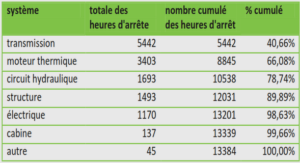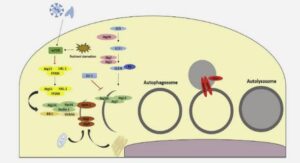FICHE TECHNIQUE DE PRODUCTION D’ANONES
WHAT IS ANNONA ?
Annona is a genus of tropical fruit trees belonging to the family Annonaceae1 . There are approximately 119 species of which 7 and one hybrid are grown for domestic/commercial use. 5 species have been selected as important under-utilised species (and are therefore included in this factsheet), 3 are commercially important Annona cherimola (cherimoya), A. muricata (soursop, guanabana) and A. squamosa (sweetsop, sugar apple), and 2, A. reticulata (custard apple, bullock’s heart) and A. senegalensis (wild soursop) are used locally. Most species are shrubs or small trees, with height varying from 5-7.5m, having erect or spreading crowns and a grey-brown, rough and corrugated bark. The stems are covered with a fine layer of hairs when young, later becoming smooth. With few exceptions, annonas are deciduous, even the tropical species, especially when cultivated in areas with a pronounced dry season and without irrigation. The fruits vary from species to species with differences in shape (round/oval/oblong/heart-shaped), size (between 2-3 cm up to 30 cm) and colour (mostly green though some cultivars are pink or red). The ripe fruit is called a syncarp. The primitive fruit form has spirally arranged carpels (female structures in the flower), resembling a raspberry, with each segment of flesh surrounding a single hard, black seed. Fruit size is generally proportional to the number of seeds within. The flowers are pollinated by insects, although fruit production is usually very poor. Production of many good quality fruits relies largely on hand pollination. 11.2 WHERE DOES ANNONA GROW ? Of the 5 species covered i n this factsheet, 4 are thought to have originated in Central and South America (cherimoya, soursop, sugar apple and custard apple) and 1 in East Africa (wild soursop). The first 4 species are now widely distributed and can be found growing, cultivated or naturalised, throughout the tropics. Wild soursop is still restricted to Africa. All species grow well in tropical climates, at high or low altitude and on a range of soil types. As 1 International Centre for Underutilized Crops, 2002, « Fruits for the Future, Annona », Factsheet N°. 5, 2p. 66 they do not tolerate waterlogging, soils have to be well drained. Rainfall requirement ranges between species, from as low as 600 mm (for wild soursop) to 2000 mm (for the more tropical soursop). Soursop is the most tropical species and requires a moist, warm climate for good fruit production. Cherimoya has its origins on the highland plateaus of the Andes and is better adapted to cooler, drier, subtropical climates, producing a good fruit yield in the Mediterranean (Spain, Italy, Egypt, Israel), southern California, South Africa, Argentina and Chile. Sugar apple grows well in moist tropical climates and in drier, subtropical climates. It is the most drought tolerant of the species and does not fruit well in high rainfall situations. It is more resistant to low temperatures than soursop and more tolerant to high temperatures than cherimoya.
WHY SHOULD YOU GROW ANNONA ?
Annona is a multipurpose tree. The fruits are consumed widely and the tree is also a source of medicinal and industrial products. The fruits contain vitamin C and minerals such as calcium, phosphorous and potassium. They are also an excellent source of energy as they are high in carbohydrate. Annona trees can give an average fruit yield of 50-100kg/tree and the commercial life of a tree is about 15 years. They are generally small trees or shrubs, which makes maintenance and fruit harvesting easy. The trees are easy to cultivate, require comparatively little care and do not suffer from serious pests and diseases.
ECONOMICS OF ANNONA
– Annona trees can be categorised into two groups. In the first group are custard apple and wild soursop. Fruit quality is generally low and trees are grown by subsistence farmers under smallholder conditions, producing a low but important income to their growers. The second group includes cherimoya, soursop and sugar apple, which are grown on commercial farms as highly remunerative crops for both small and medium scale farmers. No economic information is available at present for the species in the first group. Commercial cherimoya production occurs mainly in Taiwan, Spain, Peru and Chile, with Spain, Taiwan and Chile being the world’s largest producers. Estimated world production of cherimoya in 1994 was 213,500 hectares producing 81,000 tons of fruit. This has now been greatly exceeded as Chile alone produces in excess of 213,000 tons for export and 8,000 tons for the internal markets. Soursop is cultivated in several countries including Angola, Brazil, Colombia, India, Mexico, Panamá, Peru, Puerto Rico and Venezuela. Due to an increasing demand for both fresh and 67 processed soursop, Mexico increased its soursop production area by 88% from 1990 to 1996. This reflects a large increase in market demand. The area of sugar apple production in the Alagoas state of Brazil also showed an increase of 63% between 1995 and 1996. This growth was due to the increasing demand for sugar apple in the north-eastern Brazil market. Like soursop, the development of agroindustry and reasonable price of fresh fruits have encouraged sugar apple growers to expand their cultivated areas in the Americas.






